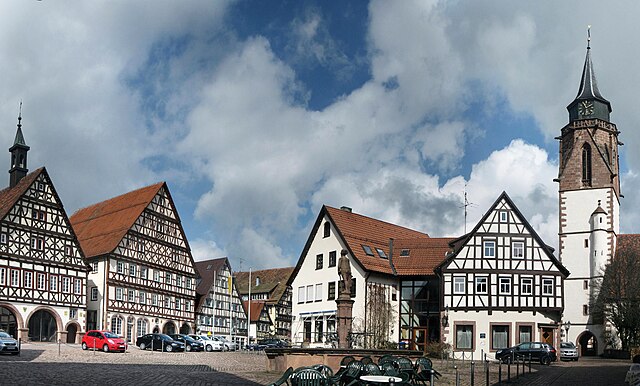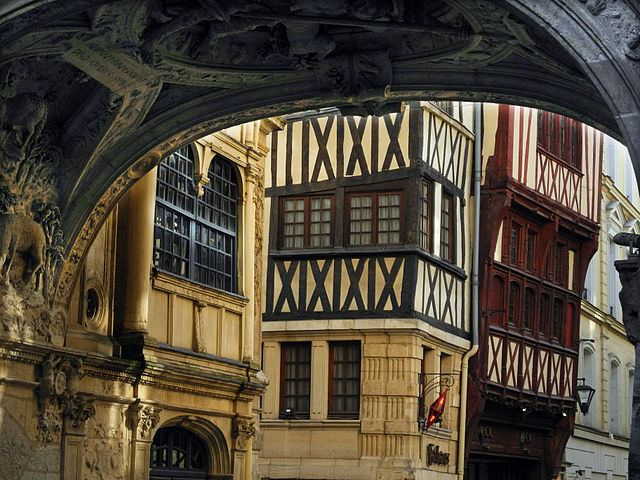The Shambles is a historic street in York, England, featuring preserved medieval buildings, some dating back as far as the 14th century. The street is narrow, with many timber-framed buildings with jettied floors that overhang the street by several feet. It was once known as The Great Flesh Shambles, probably from the Anglo-Saxon Fleshammels, the word for the shelves that butchers used to display their meat. In 1885, thirty-one butchers' shops were located along the street, but none remain today.
Looking south towards the intersection of Shambles and Little Shambles, 2018
10–11 Shambles, a Grade II* listed building
A view from 1985, looking south towards Pavement
Jettied buildings overhang the street by several feet
Timber framing and "post-and-beam" construction are traditional methods of building with heavy timbers, creating structures using squared-off and carefully fitted and joined timbers with joints secured by large wooden pegs. If the structural frame of load-bearing timber is left exposed on the exterior of the building it may be referred to as half-timbered, and in many cases the infill between timbers will be used for decorative effect. The country most known for this kind of architecture is Germany, where timber-framed houses are spread all over the country.
The market square of Dornstetten, Germany, showing an ensemble of half-timbered buildings
Rue du Gros-Horloge in Rouen, France, a city renowned for its half-timbered buildings
Lemgo, Germany, downtown
A "true" or "full" cruck half-timbered building in Weobley, Herefordshire, England: The cruck blades are the tall, curved timbers which extend from near the ground to the ridge.








